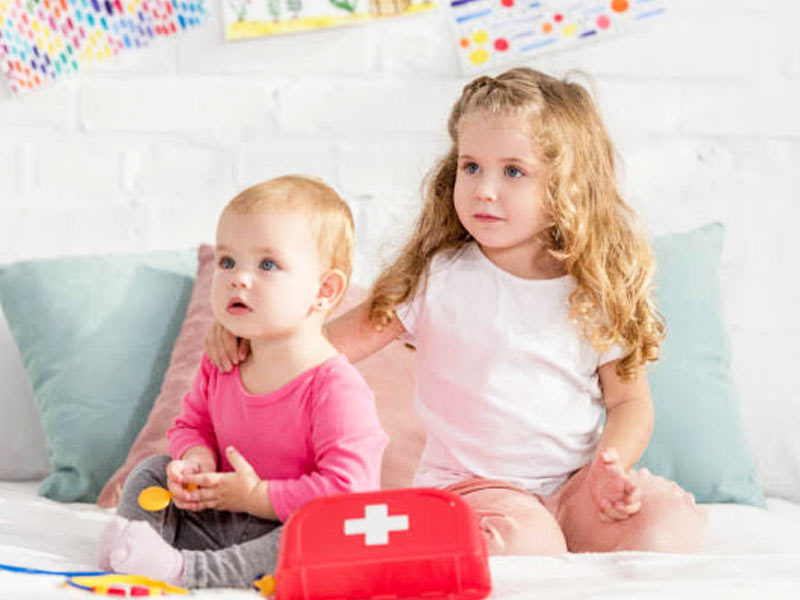
Children are taught deeply about first aid in school. From having a first aid box at home to following many other safety practices, these days kids know it all. Preparing and training them in first aid practices is important for children, so that they choose the right option. All we need to do is bring learning and our daily minor falls together. Parents and teachers should take the responsibility of teaching their children about safety practices and first aid. Onlymyhealth editorial team spoke to Dr. Sanjay Shah, General Physician, Fortis Hospital, Mulund, about simple first aid practices to train children.
Table of Content:-
Golden rules of first aid
The first step to do so is to understand the golden rules of first aid. According to Dr. Sanjay, mentioned below are the three main aspects:
- First aid is an application of skills to preserve life, prevent deterioration and think more about recovery
- It is an important skill that needs proper learning
- Golden rules of first are your own safety first and do all the tasks in a logical order and manner
First aid practices for children

The rules of first aid practices are simple. If while playing or by any reason a kid gets injured, it is important to do some things:
- Applying gentle pressure on the bleeding wound
- Cold compression or ice pack on a swollen injury
- Applying cold running water on a burn
- Pinching the nose for a few minutes minutes if you experience a nosebleed
- Wrapping a blanket if a person is in shock
Also read: First Aid Kit Contents For Babies: Top 5 Essential Medical Items
What is the right approach?
As a parent or guardian, here are few useful approaches to train your child on first aid practices:
1. The world is your classroom
If your child slips or falls down and gets a minor scratch, nosebleed or a scrape then it can become a useful teaching moment for you. While teaching them how to fix it, you can verbally describe each step that you are taking. Make them learn how much pressure should be applied to stop the bleeding. They should know about how one needs to gently wash the affected area and then clean it with water and apply a bandage with gentle pressure.
2. Play doctor doctor

The best way to teach a child something is by playing with them. They feel relaxed, curious and playful while they are playing different games. Therefore, you can engage with their natural self by playing doctor doctor and teaching them along side. You can pretend to be their imaginary patient and tell them your symptoms. This will help them in giving your problem a thought, thus more education about first aid and safety. Go through the first aid kit with your child and teach them small things about gauze, tape, band aid and cotton balls. These real tools can help your child in learning faster and better.
3. Make sure yoir child knows how to get help and can describe the situation
Usually, the most vital thing a child can do in a crisis or emergency is call for help. The child should know where to find all the emergency numbers. It is best if the kid can memorise the numbers. You should let your kids use your phone to memorise the right order of emergency numbers, but do not forget to focus on the importance of not using the emergency numbers for fun or out of curiosity.
FOR LITTLE OLDER CHILDREN, TRAIN THEM WITH DRAB
1. Danger
It is absolutely safe to help the injured person. But, make sure that you are not near any dangerous hazards such as electrical wires, damaged structures, moving vehicles, or falling objects. If the surroundings of the person are safe, then get help right away.
2. Response
Responding is also an important part when trying to help someone. Talk to the injured person and see if they are unconscious or able to answer your questions.
3. Airway
If the person is unconscious, gently tilt your head back to make sure your tongue isn't blocking your airway. If your child can practice on you a few times, it won't be as weird when they have to do it in the real world.
4. Breathing
As the 'patient,' practise checking for breathing by having your child assess you while you either breathe softly or hold your breath for 10 seconds. The child can then dial 911 for assistance.
It is a parent's duty to make sure the children are aware that they do not need to be a hero or overexert with their skills and abilities. You should assure children know that their first and most important job is to keep themselve safe and then prioritise on helping other people around.
Also watch this video
How we keep this article up to date:
We work with experts and keep a close eye on the latest in health and wellness. Whenever there is a new research or helpful information, we update our articles with accurate and useful advice.
Current Version